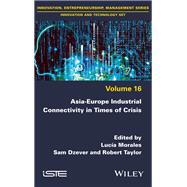The main objective of this book is to offer an overview and a critical assessment of current connectivity issues in Asia and Europe, seen from an industrial perspective. Critical insights into the contemporary debate on connectivity during times of crisis, which has led to significant economic and social disruptions, are offered throughout the book. European and Asian countries seek to "bounce forward" and not "bounce back" as they navigate the complex economic recovery process. Innovation and investment emerge as critical players to help an economic recovery that shifts towards a more resilient and environmentally friendly approach, to ensure that the world economies stay connected.
The global health crisis has revealed that, more than ever before, ubiquitous connectivity, underpinned by pioneering innovation, is a must. As such, governments worldwide need to ensure that businesses and societies emerge stronger and more resilient from existing and emerging crises by laying solid foundations that help to circumnavigate future disruptions of a global magnitude.









